What are the characteristics of sun treatment? What is the difference between sun treatment and washing treatment?
A delicious coffee bean, is through the results, picking, manual selection and then through the raw bean processing, and finally in the baking, to get the well-known coffee beans.
The treatment of coffee beans is very important in the treatment of raw beans, and the treatment method has always been an important part of coffee. As a process of shelling and taking beans, the different treatment methods and quality will directly affect the final flavor of coffee.
Here is a detailed introduction of the traditional treatment-sun treatment.
Sun treatment
Sun treatment is an ancient method of raw bean treatment, which is generally common in dry, warm and sunny areas. Now, the fruit tone that sun treatment brings to coffee also makes coffee growers around the world take risks to do sun treatment. 、
The first step; collect and filter
After picking the coffee fruit will be hand-selected first to select the defective coffee fruit, including overripe, immature, moth-eaten and, of course, foreign bodies in addition to the fruit.
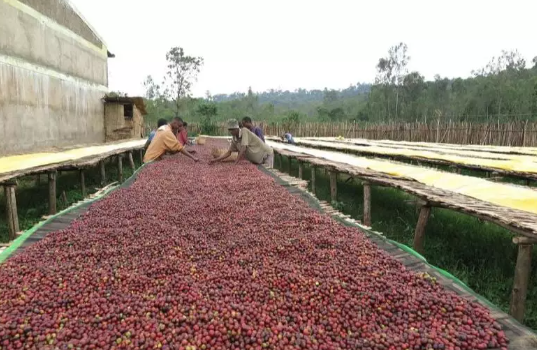
Step 2; drying
After screening, the coffee fruit will be sent to a drying place for drying, and different regions may use different drying racks, some with tarpaulins, some with high beds, some with cement floors, etc., and the average drying time is 3 to 4 weeks. the drying process was not completed until the moisture content of the coffee was reduced to 11%.
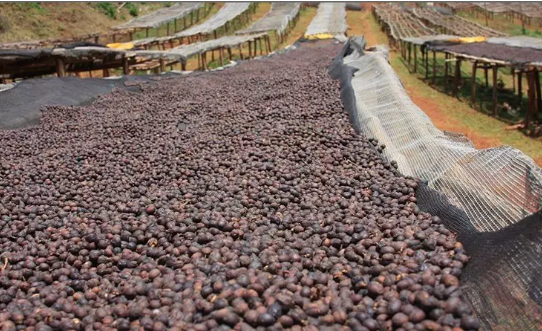
Step 3: peeling
After drying, the coffee fruit is sent to the processing plant for peeling and shelling, and even polished. Peel, pulp and other parts will be removed in this step.
Step 4: sorting, warehousing
Peeled raw coffee beans will be screened again to remove coffee beans that do not look good. This reflects the quality of the coffee drying process, over-dried coffee beans will be more fragile, peeling process will be broken into debris; while under-dried coffee beans have too much water content, water is too active, easy to breed bacteria, mildew and so on.
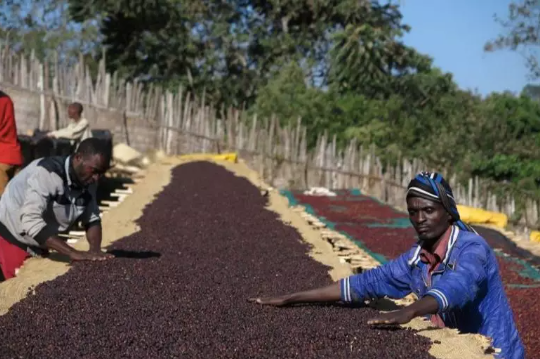
After screening, it will be sent to the warehouse for storage until it is exported.
In the traditional treatment of sun-treated coffee, it has the lowest acidity, the highest sweetness, the clearest touch, but slightly lower cleanliness. The flavor is exposed to the sun. Due to the rough conditions and rough treatment, the quality of the old sun-cured coffee is uneven and the defect rate is high. At the same time, the cause of the defect also comes from the strong dependence on the weather. A month of drying requires a continuous and stable high temperature and dry weather. If it rains during the drying period, it will cause mildew of the coffee fruit.
However, with the popularity of the sun trend in recent years, many producing areas continue to optimize the details of the sun treatment steps in order to improve the taste of the sun coffee cup. Before drying, flotation will be carried out to remove coffee fruits with insufficient density, and drying sites are also strictly controlled, such as the construction of high beds in Africa, cement drying platforms, and so on, and in order to dry evenly in the process of sun drying, many treatment plants or estates will employ workers to turn them regularly to evenly dry while avoiding excessive fermentation and reducing defects.
The water washing treatment is different from the sun treatment, it is a kind of stable quality treatment, in the treatment process, the picked coffee fruit will be floated first, and the low density coffee fruit will also be removed. Then use a machine to remove the peel and pulp, and then put it into a pool for anhydrous or aqueous fermentation, using fermentation to decompose the pectin layer. After fermentation, the coffee beans are washed with clean water to remove pectin. Finally, the coffee beans without pectin layer are sun-dried to reduce the moisture content to between 11% and 13%.
Compared with the sun treatment, the acidity and cleanliness of the washed coffee is higher, but the complexity is not as good as that of the sun, while the sun-washed coffee has a heavier berry flavor, complex and sweeter than the washed coffee. Will produce more berry tonality, but also more complex.
But the disadvantage is also very obvious, the most primitive and traditional sun treatment method will put the coffee fruit on the drying terrace or directly on the side of the road to direct exposure, due to rough conditions and rough treatment methods, the quality of the old sun-cured coffee is uneven and the defect rate is high. At the same time, the cause of the defect also comes from the strong dependence on the weather. A month of drying requires a continuous and stable high temperature and dry weather. If it rains during the drying period, it will cause mildew of the coffee fruit.
However, with the popularity of the sun trend in recent years, many producing areas continue to optimize the details of the sun treatment steps in order to improve the taste of the sun coffee cup. Before drying, flotation will be carried out to remove coffee fruits with insufficient density, and drying sites are also strictly controlled, such as the construction of high beds in Africa, cement drying platforms, and so on, and in order to dry evenly in the process of sun drying, many treatment plants or estates will employ workers to turn them regularly to evenly dry while avoiding excessive fermentation and reducing defects.
The water washing treatment is different from the sun treatment, it is a kind of stable quality treatment, in the treatment process, the picked coffee fruit will be floated first, and the low density coffee fruit will also be removed. Then use a machine to remove the peel and pulp, and then put it into a pool for anhydrous or aqueous fermentation, using fermentation to decompose the pectin layer. After fermentation, the coffee beans are washed with clean water to remove pectin. Finally, the coffee beans without pectin layer are sun-dried to reduce the moisture content to between 11% and 13%.
Compared with the sun treatment, the acidity and cleanliness of the washed coffee is higher, but the complexity is not as good as that of the sun, while the sun-washed coffee has a heavier berry flavor, complex and sweeter than the washed coffee.
Important Notice :
前街咖啡 FrontStreet Coffee has moved to new addredd:
FrontStreet Coffee Address: 315,Donghua East Road,GuangZhou
Tel:020 38364473
- Prev
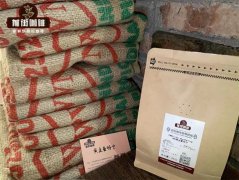
Why is it called Golden Manning? where can I buy authentic gold manning?
Mentling coffee, Ankora coffee and Lintong coffee grown in Sumatra are the best quality gourmet coffee in the world. These coffees are characterized by rich, more down-to-earth flavors than Java Arabica, unique herbal tones and low acidity. This low acidity makes them particularly attractive to people who are sensitive to healthy organic acids in coffee. Sumatra caffeine is abundant.
- Next
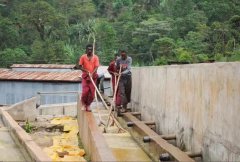
The advantages and disadvantages of washing treatment method coffee beans, washing treatment method and sun treatment method which good to drink?
Treatment is a necessary condition for making a coffee bean, and it is also a crucial step, which guides the direction of coffee flavor. What is coffee bean processing? Such as common washing, sun and honey treatment. These treatments refer to green bean treatments, which are processes to obtain the green bean portion of the coffee fruit, scrape off the pulp, peel, and fruit layer. Coffee after harvest
Related
- Detailed explanation of Jadeite planting Land in Panamanian Jadeite Manor introduction to the grading system of Jadeite competitive bidding, Red bid, Green bid and Rose Summer
- Story of Coffee planting in Brenka region of Costa Rica Stonehenge Manor anaerobic heavy honey treatment of flavor mouth
- What's on the barrel of Blue Mountain Coffee beans?
- Can American coffee also pull flowers? How to use hot American style to pull out a good-looking pattern?
- Can you make a cold extract with coffee beans? What is the right proportion for cold-extracted coffee formula?
- Indonesian PWN Gold Mandrine Coffee Origin Features Flavor How to Chong? Mandolin coffee is American.
- A brief introduction to the flavor characteristics of Brazilian yellow bourbon coffee beans
- What is the effect of different water quality on the flavor of cold-extracted coffee? What kind of water is best for brewing coffee?
- Why do you think of Rose Summer whenever you mention Panamanian coffee?
- Introduction to the characteristics of authentic blue mountain coffee bean producing areas? What is the CIB Coffee Authority in Jamaica?

